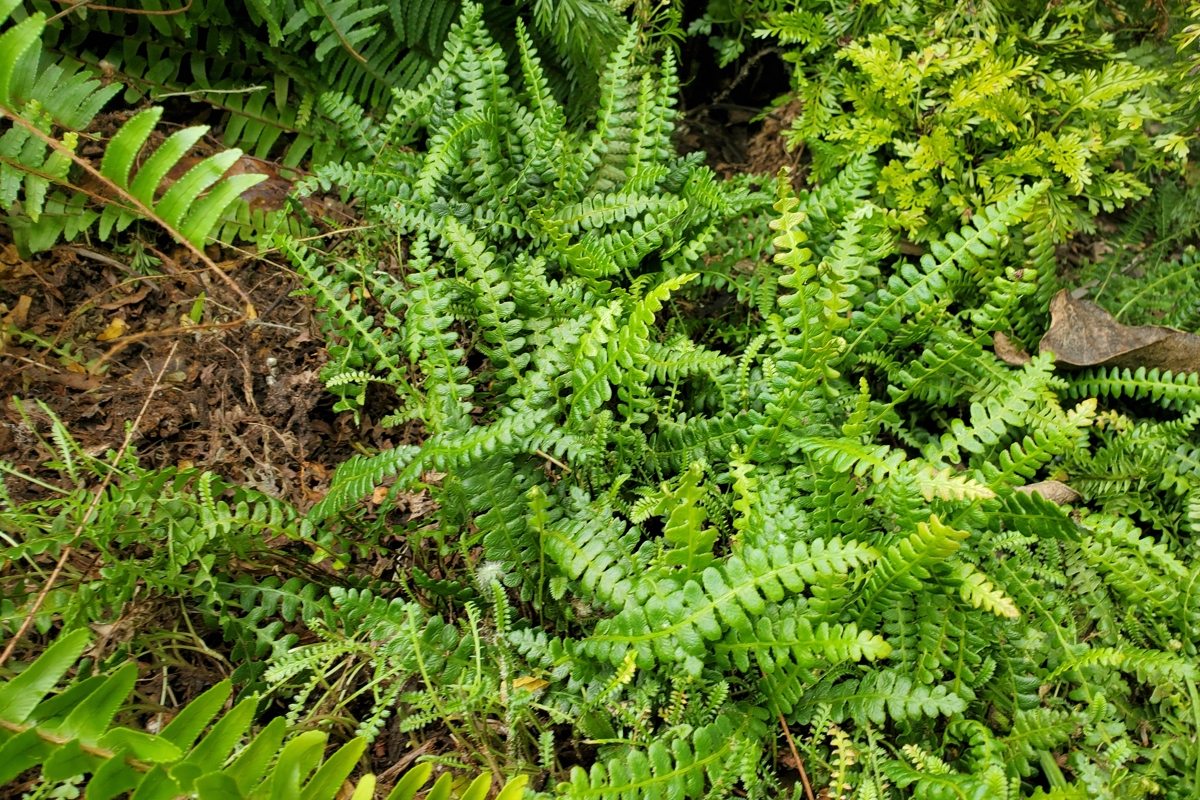Physical characteristics
Low-growing, compact,
Flowers and foliage
Dark
Preferred site
Prefers moist, humus-rich soil in a shelte
Preparation for planting
Surprisingly
Always choose healthy well-grown
Maintenance tips
Requires well-drained soil with plenty of organic matter. Mulching helps conserve moisture and suppress weeds. Organic materials, such as sawdust and bark, contribute to soil structure as they decompose. Keep mulch away from plant stems.
The root ball sometimes dries out despite the surrounding soil being moist. When this occurs, directly water down the plant stem to saturate the root ball. The first summer and autumn after planting are critical for young
Requires no major maintenance. Remove old fronds when they become unsightly. Benefits from regular applications of fertiliser.
Pests and diseases
No pest and disease issues.
Location at Auckland Botanic Gardens
Native Identification Trail
Interesting facts and tips
Its natural range covers the North and South island, as well as Stewart, Chatham, Antipodes, Macquarie and Auckland Campbell Islands. It is present on Mt Taranaki. It also grows in Australia, some Pacific islands and in South America. This species' habitat is




.jpg?width=1200&height=1200&v=1d4024dceb89e50)

.jpg?width=1200&height=1200&v=1d5569224d63650)
 .jpg?width=1200&height=1200&v=1d4024df6ce2770)
.jpg?width=1200&height=1200&v=1d55676a892f2b0)
 .jpg?width=1200&height=1200&v=1d4024e3b65f7f0)